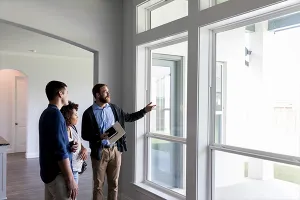- The short-term outlook is weak, with the first quarter existing home sales figures to be down by about 5 to 8 percent from one year before. Severe winter weather, inventory shortage, higher mortgage rates, and tight credit availability are some of the reasons for the setback.
- The long-term outlook, however, is bright. Simple comparisons of very basic numbers imply current under-performance but suggest the potential for a sizable increase in home sales.
- The table below compares three time periods:
- The year 2000 can be characterized as being very normal and uneventful. There was no discussion of a housing market bubble by economists or in the media. One may say that the housing market was also uneventful or even boring.
- The year 2005 was the peak bubble year in terms of eye-popping home sales and home prices induced from essentially no underwriting standards.
- The current year 2014 clearly looks to be underperforming, but has huge upside potential. Consider: there are 5 million annualized existing home sales today, which is the same as in 2000. Yet we have 34 million additional people living in the country, 4 million more people with jobs, and much lower mortgage rates. When we’ll get this upside release of pent-up demand, however, is unclear at the moment.









